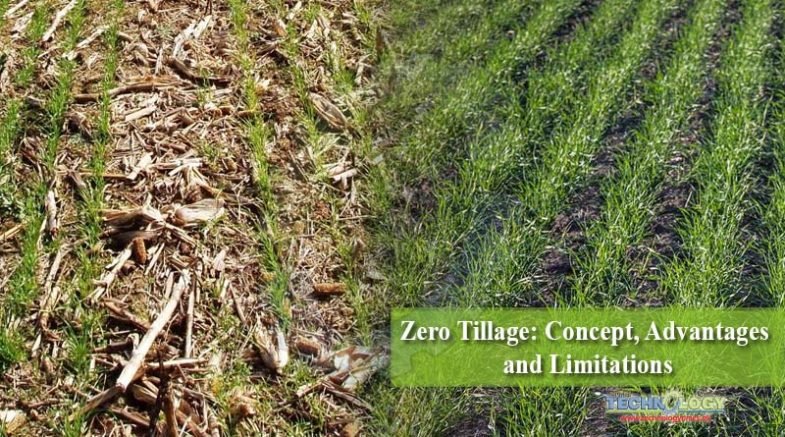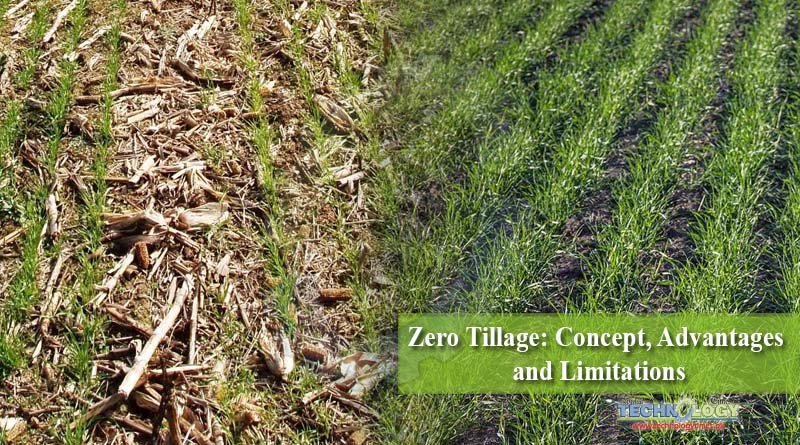Zero tillage or No-till is an extreme form of tillage. Its primary concept to avoid the extensive tillage. No till farming is a practice of growing crops or pasture from year to year without disturbing the soil.
 Primary tillage is completely avoided & secondary tillage is restricted to seedbed preparation in the row zone only. It is the direct sowing of seed in the field without any disturbance to the soil e.g. sowing of wheat in standing cotton.
Primary tillage is completely avoided & secondary tillage is restricted to seedbed preparation in the row zone only. It is the direct sowing of seed in the field without any disturbance to the soil e.g. sowing of wheat in standing cotton.
Conventional tillage is opposite of zero tillage. Conventional tillage is a tillage system using cultivation as a major mean of seed bed preparation and weed control. In conventional tillage, soil erosion and soil compaction is more while organic matter and soil biological health is adversely affected.
Conventional tillage control weeds and also causes more weeds seeds to germinate by providing condition favorable for germination. Happy seeders drill, turbo seeders drill and zone disc tillers are used in zero tillage farming system for sowing of seeds. Happy seeders drill is used for sowing of rice in wheat stubble.
It cut the stubbles in large pieces and spread on the surface of a soil as a mulch sheet. Over shading of these large size stubbles reduces the germination. Turbo seeders drill chopped the stubbles. Here germination is more as compared to the happy seeders drill. The major advantage of zero tillage is timely sowing of a crop.
In rice-wheat cropping system rice is cultivated on 70 percent area of Punjab. On 80 percent area fine basmati rice varieties are cultivated that mature in November. The farmer consumes much of its time in removing stubbles and in primary and secondary operations. Recommended date for wheat sowing is 1st to 22nd November.
Every day delay in sowing will reduce the yield 30-35kg per hectare. It enhances fertilizer use efficiency and organic contents of the soil. It reduces the evaporation and enhances water use efficiency. Despite of some advantages there are some limitations of this system. it requires specific machinery.
In zero tillage farming system zero till drill is required. It is very difficult for small land holders to purchase such heavy cost machinery. This system is not suitable for every type of the soil. Higher amount of pesticides are require to control the weeds. Due to more moisture content there is more risk of fungal disease. Stubbles provide shelter for insect pest and disease.
This system requires more management as compared to conventional tillage. There are some important considerations for adoption of zero tillage.Standing stable is not longer than 15cm. Calibrate the zero till machine before planting so that proper amount of seed and fertilizer is placed in the field. Seed should be kept at 5cm depth in zero tillage farming system.
